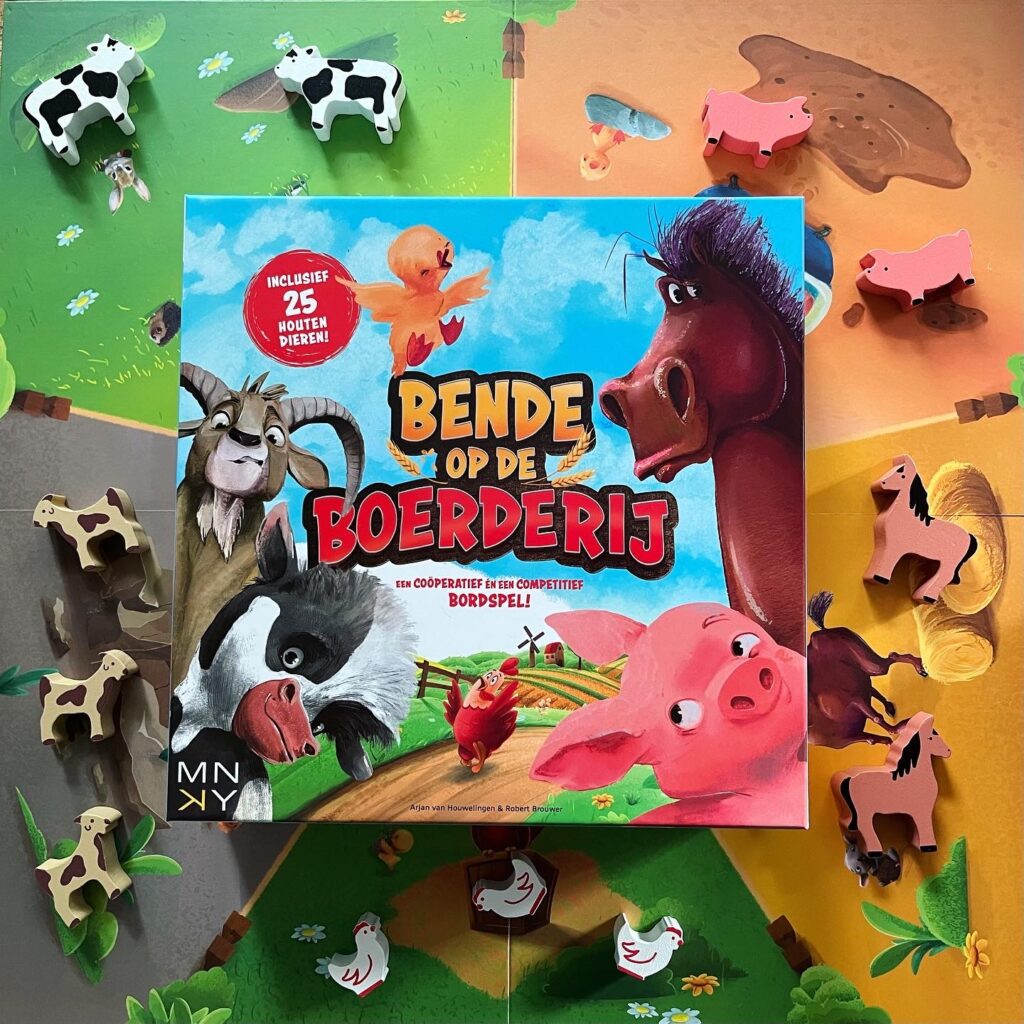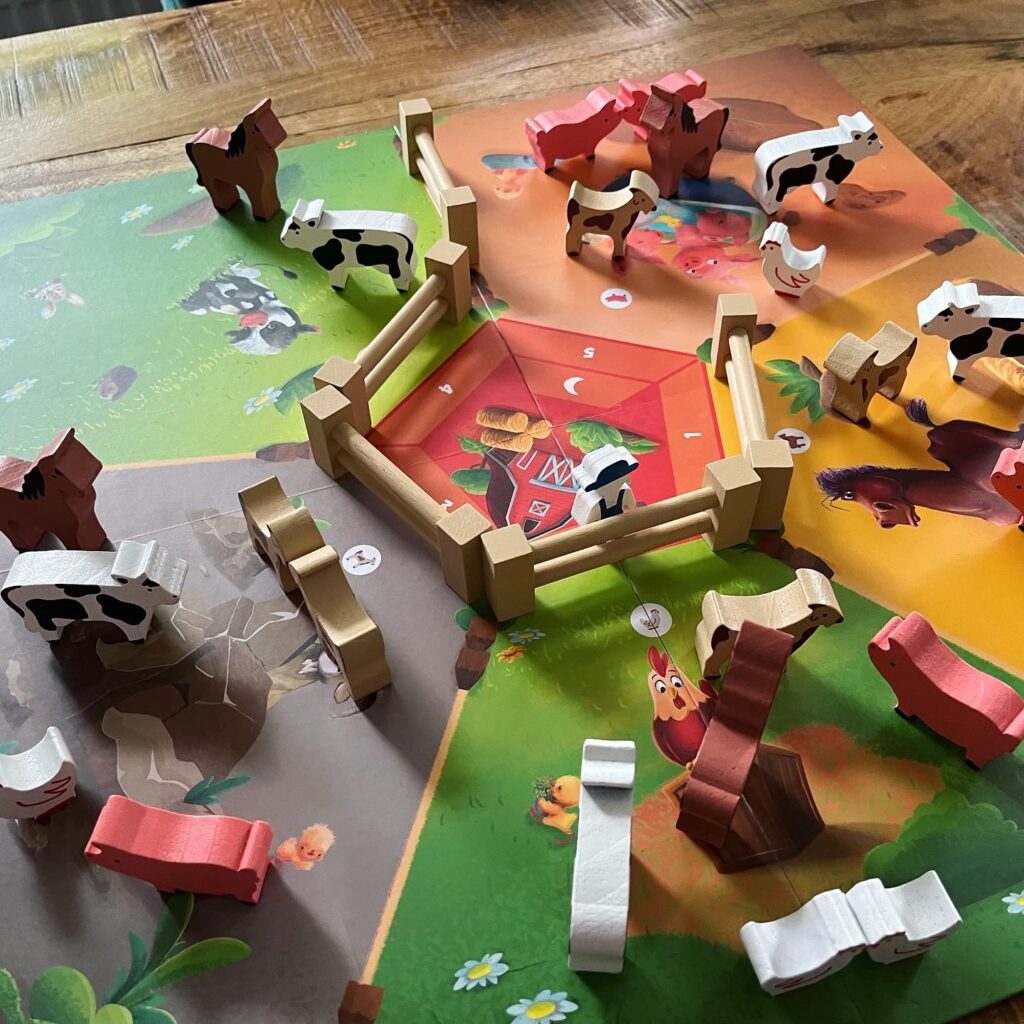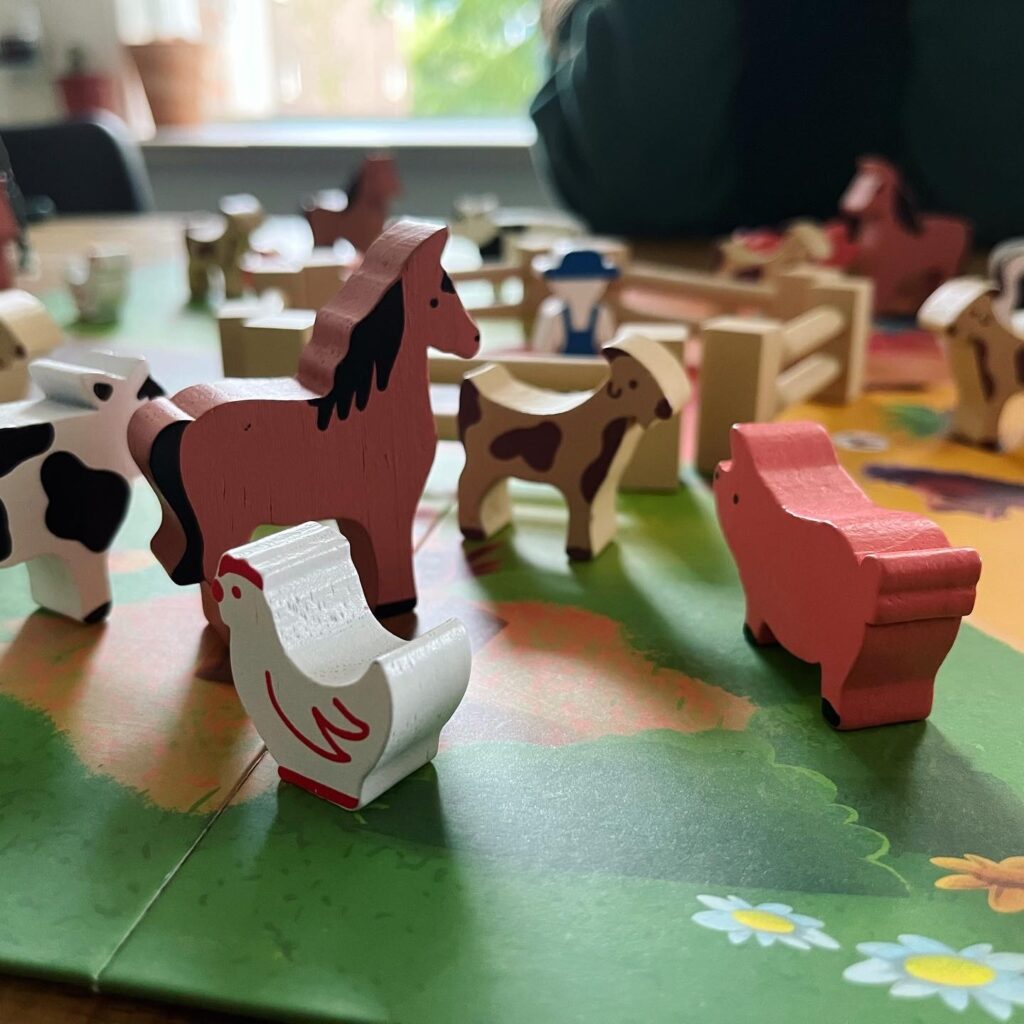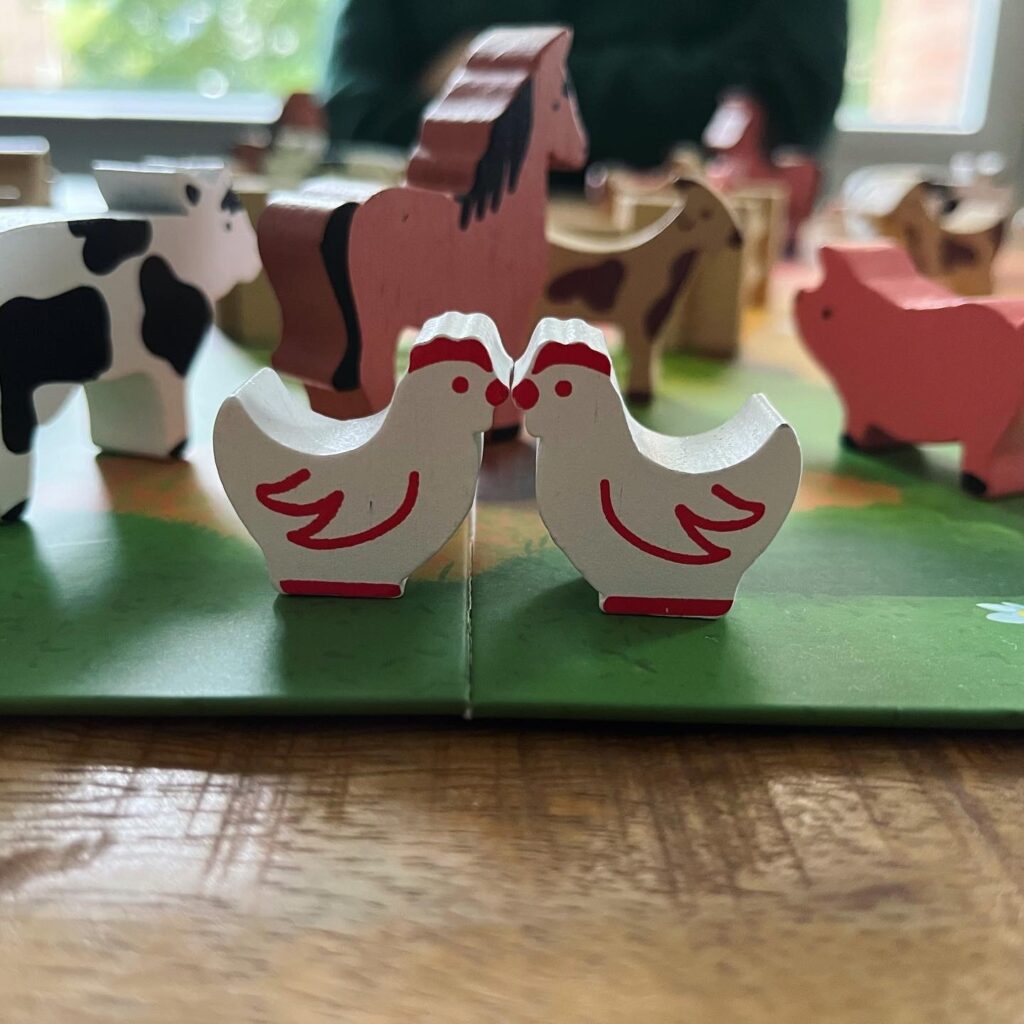The farm is in chaos, cows and chickens sleeping together, mass hysteria! It’s that time again. It is up to regular Farmer Joe to clean up the Chaos at the Farm once and for all and put the cattle back in their proper place.

Chaos at the Farm is a game made (primarily) for children and families that you can play both cooperatively and competitively. A bonus for all the little farmers and farm girls who can’t (yet) cope with losing all that well. Depending on which mode is played, players set up the game and once the stables are filled with the large wooden pawns shaped like typical cattle, players are ready to play.
Cooperative farming
In the cooperative mode, at the beginning of the game all the different animals are in each pasture. During this mode, players collectively try to get the animals back in the correct pasture before the farmer goes to sleep. In the center of the game board is this farmer and each time players roll a moon, this farmer slowly moves to the moon. Once the moon is reached, it is time to sleep.
Each turn a player rolls the die and depending on the roll, that player may move an animal 1, 2 or 3 steps. If a fence is rolled, one of the fences surrounding the farm may be placed between one of the pastures. This blocks the path between these pastures, but opens a possible passage and faster route through the farm.
During cooperative mode, players can of course confer to plan the best moves. Once all the animals are back in the right place and it is not yet bedtime, players have collectively won.
Agricultural competition
In the competitive game mode, each player plays with a specific animal and a player must be the first to get all their animals in the right place to win. As in the cooperative variant, players can move with the dice. With fences, players can block each other or open roads between farms.



If players roll a moon, they must skip their turn. The moon can also be used to play a variant where players play not only against each other, but also against the clock!
Conclusion
The visual design of Chaos at the Farm is colorful and attractive. The large wooden pawns are of high quality and very cute. Because the game pieces are large, even the smallest fingers can easily grasp and move these beasts.
The gameplay reminds us a little bit of Backgammon, as players can make a mandatory amount of moves with a pawn based on a dice roll and be the first to get multiple game pieces to their base. Unlike Backgammon, the pieces are not moved in the same line every time, pieces are not captured and players have another option to block each other by using the fences.
Because players are required to move the number rolled or choose not to move at all, minor players can learn to plan. In fact, sometimes it is more advantageous not to move if it will provide a better position later. With fences, players learn to thwart each other. Chaos at the Farm contains a number of different variants and difficulty levels for both cooperative and competitive play, making it easy to adapt the game to the players’ level. Chaos at the Farm is a simple children’s game with a bellowing theme, suitable for even the youngest calves and lambs.



